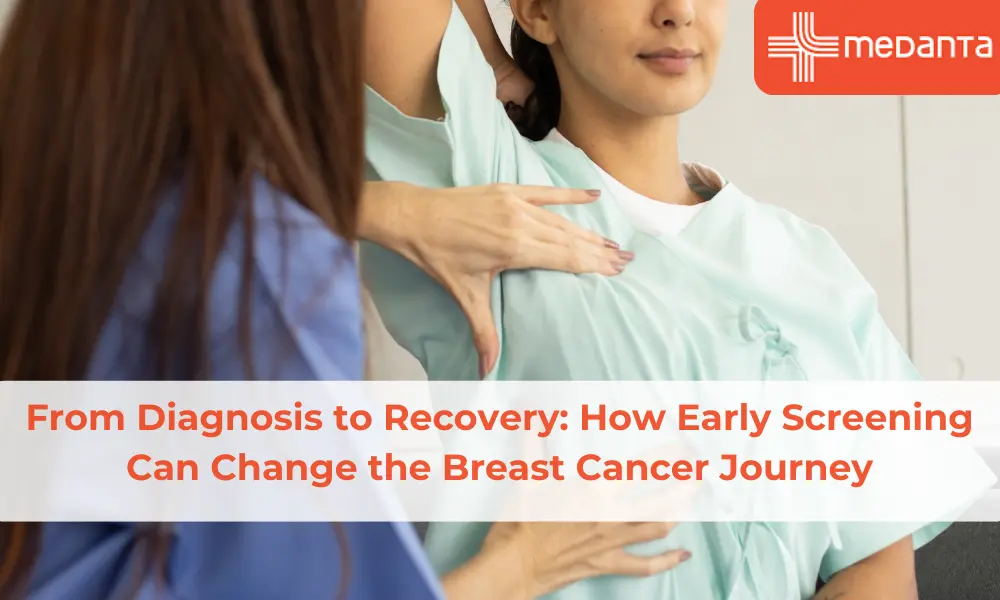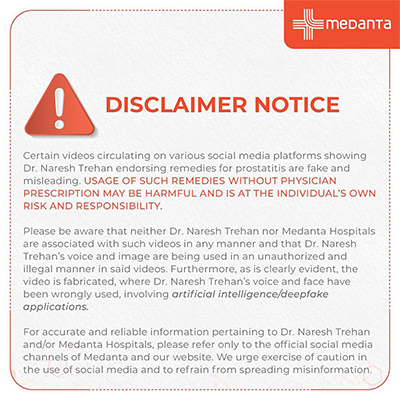Breast Cancer Screening: When to Start and Why Its Life-Saving
TABLE OF CONTENTS
Doctors generally recommend breast cancer screening to detect breast tumour early. As per various studies and international recommendations, finding cancer when it's smaller and more treatable gives you better chances of survival.
Breast cancer screening checks your breasts for cancer before any signs or symptoms show up. The main goal is to find cancer early, while it's smaller, easier to treat, and more likely to be cured.
Your doctor doesn't recommend screening you because they think you have cancer. They're simply taking proactive steps to protect your health. These tests can spot potential problems before they cause noticeable symptoms.
Why screening matters: Early detection of breast cancer makes treatment much more successful. Cancer that doctors find at the original stage is typically:
Smaller in size
Less likely to spread beyond the breast
More responsive to treatment
Screenings can't prevent breast cancer but they substantially help with early detection. The process is different from diagnostic tests. Screening looks for disease in people without symptoms, while diagnostic tests come into play after symptoms appear or screening results look unusual.
Protip: Regular screening to detect breast tumour early remains one of the most powerful ways to prevent deaths from this disease.
How Often Should You Get Screened?
Breast cancer screening frequency depends on your age, risk factors, and which guidelines you follow. Different medical organisations have their own recommendations that let you choose what works best for you.
Here's what the American Cancer Society recommends:
Women 40-44 may choose annual mammograms
Women 45-54 should get screened yearly
Women 55+ can switch to every other year or continue annually
The US Preventive Services Task Force takes a different approach. They recommend mammograms every two years for women between 40 and 74 years old. Their research indicates that screening every two years achieves a better balance of benefits and possible risks.
Women with higher risk need more thorough screening:
A lifetime risk of 20-25% or greater means yearly mammograms and breast MRIs starting at age 30
BRCA gene mutations or first-degree relatives with these mutations require earlier screening
Previous chest radiation therapy before age 30 needs closer monitoring
Women at higher risk, such as those with a family history of breast cancer or genetic predisposition may need to begin screening even earlier based on their doctor’s recommendations.
Guidelines may differ slightly, but they all point to starting screenings by 40. The Society of Breast Imaging notes that all but one of six new breast cancers show up in women aged 40-50.
Different Types of Screening Tests
Doctors can spot breast cancer early through several testing options.
Mammograms are the gold standard for detecting breast cancer. These specialised X-rays compress the breast and create detailed images. Modern facilities now offer both 2D and 3D (breast tomosynthesis) versions. The 3D versions give clearer, more detailed pictures.
Breast ultrasound creates images using sound waves instead of radiation to check breast tissue. It also works best for women with dense breasts. Doctors use it to separate cysts from solid masses and break down areas that mammograms might miss.
Breast MRI produces detailed images with magnets and radio waves. This test isn't right for everyone but helps screen high-risk patients along with yearly mammograms. MRI can detect cancers that mammography alone might miss.
Clinical breast exams by doctors and breast self-awareness are great ways to get additional protection.
Note that these tests work together - all but one of these methods might miss something. Your doctor will suggest the right mix of tests based on your risk factors.
Benefits of Early Detection
Early breast cancer detection saves lives. The statistics paint a clear picture - breast cancer patients have a 99% chance of surviving for 5 years when doctors find and treat it before it spreads.
Regular screening gives patients their best shot at beating cancer. Finding it early leads to:
Less extensive surgery - doctors can often remove just the tumour (lumpectomy) instead of the whole breast (mastectomy)
Milder treatment options - some patients can skip rough treatment modalities
Faster recovery times
Lower financial costs than treating advanced cancer
Quick detection can mean the difference between a short treatment plan and a long fight against cancer. A normal screening result gives women incredible peace of mind.
What to Expect During a Screening
Your breast cancer screening appointment will go smoothly with some simple preparation.
A two-piece outfit works best since you'll need to undress from the waist up.
Skip deodorant, perfume, lotion or powder under your arms or on your breasts as these products can interfere with mammogram images.
The staff will ask you to remove jewellery and clothing above your waist.
The whole process takes about 30 minutes, and the actual mammogram only needs 5-15 minutes.
During the mammogram:
You'll stand facing the X-ray machine
A female mammographer positions each breast one at a time on the support plate
Two plastic plates compress your breast for a few seconds
This compression helps create clearer images by spreading the breast tissue
You'll need to hold your breath briefly during the X-ray
The compression might feel uncomfortable or painful, but it only lasts seconds. Let your mammographer know if you feel too much discomfort.
Technicians might need you to wait while they check image quality after the screening. You should receive results within two weeks. Your doctor might recommend additional images or tests if something needs further investigation.
Feel free to ask questions or share any concerns during your visit.
FAQs
At what age should I start breast cancer screening?
Medical organisations recommend starting screenings at age 40 if you have an average risk. The US Preventive Services Task Force has updated guidelines that suggest screenings every two years between ages 40-74. High-risk women might need to start earlier, sometimes by age 30.
How often should mammograms be done?
You should get screened every one to two years. Women between 40-54 might benefit from yearly screenings. After 55, you can choose either biennial exams or stick with annual checks based on your risk factors and preferences.
Are breast cancer screenings painful or risky?
The breast compression during mammograms causes some discomfort. Many women feel pain, but it lasts just a few seconds. Mammograms do expose breasts to small amounts of radiation. The benefits usually outweigh these minimal risks.
Can screening prevent breast cancer?
Screening can't prevent breast cancer - it helps detect it early. Finding cancer when it's smaller and more treatable gives you better chances of survival.
Where can I get screened in India?
Breast cancer screening facilities exist throughout India. Look for accredited mammography centres through national health programmes and major hospitals. Your local doctor can refer you to nearby screening centres.
What are the different types of breast cancer screening tests?
Mammograms (2D and 3D), breast ultrasound, and MRI serve as main screening methods. Doctors also use clinical breast exams. Molecular breast imaging works well for dense breasts.
Who should consider getting screened earlier than usual?
Earlier screening makes sense if you:
Have BRCA1/BRCA2 gene mutations
Have a strong family history of breast or ovarian cancer
Received chest radiation before age 30
Can breast cancer screening detect all types of breast cancer?
Mammograms are the gold standard diagnostic method to detect breast cancer. They miss roughly 1 in 8 breast cancers. Dense breast tissue makes detection harder.
Are there any guidelines for breast cancer screening during pregnancy?
Doctors rarely recommend screening mammograms during pregnancy unless symptoms show up. If needed, they can perform mammograms with abdominal shielding. Ultrasound remains the safest option during pregnancy. MRIs aren't recommended because contrast agents could harm the baby.
What should I do if my screening results are abnormal?
Remember that most abnormal results don't mean cancer. Your doctor might recommend extra tests like diagnostic mammograms, an ultrasound, or a biopsy. Only about 5% of women who need follow-up tests actually have cancer.





